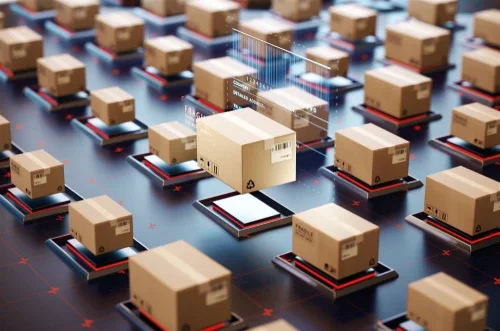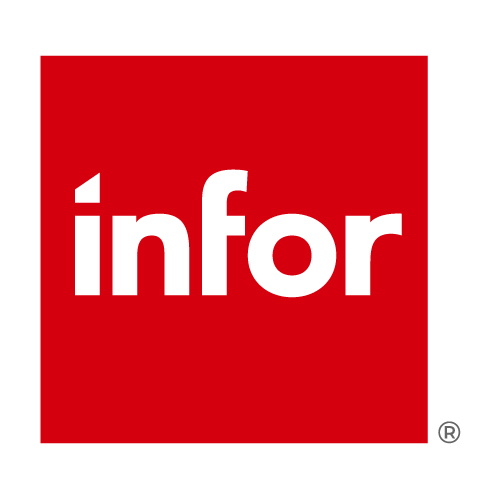
With the spectacular rise of online retail and digital channels, order fulfilment is shifting dramatically – away from the regular rhythms of B2B logistics, towards a B2C model where individual consumers order products directly from warehouses. If nothing else, this trend is clear from the statistics, with Amazon and similar giants helping to turn B2C e-commerce into a $4.1trn industry.

At the same time, many businesses are embracing personalised ordering and tight lead times of end consumers. It’s clear, at any rate, that the logistics industry must adapt – and fast. But in a sector that has been slow to embrace digitalisation, what can distributors do to adapt? One solution is to partner with a bespoke digital provider – and bring logistics efforts to the cloud.
Changing customer behaviours
Håkan Strömbeck is in a good position to explore the changing outlook of global logistics. The senior director of industry and solution strategy at Infor explains that the phenomenon of B2C logistics can be understood in two distinct ways. The first trend – and perhaps the most well-known – encompasses the dramatic growth of B2C e-commerce.
More fundamentally, however, Strömbeck argues that the B2C logistics revolution is being driven by businesses themselves, many of which “are starting to behave much more like consumers”. As Strömbeck continues, that covers a range of practical changes, every one of which logistics must react to.
For Strömbeck, probably the biggest shift here involves the way in which firms now expect deliveries at much shorter notice. “Back in the day, you probably had close to yearly plans,” he says, arguing that warehouses could once arrange product volumes and distribution schedules months in advance.
These days, however, Strömbeck sketches an “unplanned, unpredictable” environment, one where B2B clients expect smaller orders on a much tighter schedule – hardly surprising when, according to Invesp, 80% of shoppers expect same-day deliveries.
It goes without saying that this shift presages vast changes in how a logistics company must function: and not simply in terms of planning.
With individual orders soaring, even as bulk deliveries drop, Strömbeck characterises the situation as one where modern logistics operators must deal with “thousands” of invoices each month. And because the administrative work is now so much more taxing, Strömbeck warns that firms ultimately risk losing out – if they can’t keep up through laborious and error-prone manual accounting.
Nor is this merely a time-management issue, with GoComet noting that 75% of logistics leaders uncover discrepancies between the final quotation they receive and the freight invoice.
Another challenge, meanwhile, is that many B2B customers are demanding more personalised services. To explain what he means, Strömbeck takes the hypothetical example of an electrical warehouse, where B2B clients are starting to order specific lengths of cable. That is a potentially valuable new revenue stream but also requires significant operational reform on the part of the warehouse to deliver such requirements.
Yet if what Strömbeck describes as “lightweight manufacturing” can certainly offer business advantages, both financially and in terms of boosting customer relationships, he equally stresses that such sophisticated services can only thrive if a distributor has a solid grasp of their data. Without it, he says, firms will “never be able” to effectively balance prices and costs, let alone prod staff into getting the work done.
Agile B2C logistics solutions
Given this vivid blend of challenges and opportunities, it’s no wonder many logistics firms are rushing ahead with more robust ways of understanding and arranging their data. Infor, for its part, is leading the charge, offering a range of cloud-based ERP solutions for logistics firms of all sizes.
Embedded with an industry-leading activity-based solution, boasting technologies like account-specific workflows, Infor ensures that company moneymen can trace billing across multiple warehouses. That last point is bolstered by Infor’s cloud-based technology, which allows staff in different geographies to access the same data at speed.
A similar level of versatility is apparent when it comes to Infor’s so-called ‘wave’ planning system. Allowing users to schedule work iteratively, adding tasks even as other projects have reached shore, Strömbeck and his colleagues make it straightforward for logistics firms to keep up with the most hectic of B2C-inflected schedules.
As Strömbeck points out, this standardised approach to fulfilment is bound to lead to “much faster” results than trying to support customer needs on an ad hoc basis, a point that could equally be applied to the issue of personalisation. Infor makes it easy to hone service requirements to individual customers, helping warehouse staff arrange everything from kitting to bundling to compliance labelling – all in a single system.
Not only does that make calculating a reasonable profit margin far simpler, but Strömbeck also suggests that the “stickiness” of the distributor to their customer is likely to aid wider business relationships.
While platforms like Infor’s can certainly offer benefits now, Strömbeck and his team are equally looking ahead. Leaning on a vast stable of industry contacts, as well as building his systems with flexibility in mind, Strömbeck says that logistics companies can’t wait around to secure a partner to “operate future operating models”.
Given just how much B2C logistics has transformed so far, it’s surely an argument worth heeding.








